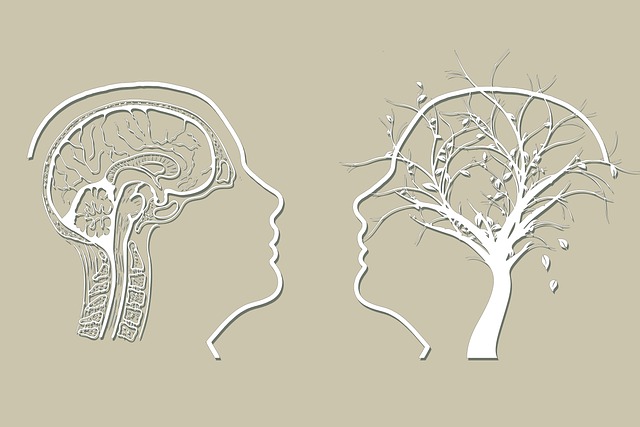Public awareness campaigns utilizing visual communication tools, such as graphics, infographics, and videos, are powerful for educating communities and driving positive change, especially on sensitive topics. Lafayette American Sign Language (ASL) Therapy is a pioneering approach that uses visually appealing content to promote inclusivity for the deaf community by teaching ASL, enhancing accessibility, and providing tailored crisis intervention and conflict resolution strategies. Effective campaigns require strategic planning, diverse communication channels, consideration of cultural contexts, and evaluation metrics like reach and engagement rates. Crisis Intervention Guidance and Positive Thinking campaigns can measure improvements in mental well-being post-evaluation.
Public awareness campaigns play a pivotal role in educating and engaging communities, and their impact is far-reaching. This article explores strategies for crafting compelling messages that resonate with diverse audiences. We delve into the power of visual communication, showcasing how it enhances understanding. Furthermore, we highlight innovative approaches like Lafayette American Sign Language (ASL) therapy, which breaks down barriers to accessibility. By combining creative design and evidence-based methods, campaigns can achieve remarkable results, as measured by key performance indicators.
- Understanding Public Awareness: The Role of Visual Communication
- Lafayette American Sign Language (ASL) Therapy: Unlocking Accessibility
- Designing Effective Campaign Strategies for Maximum Impact
- Measuring Success: Evaluating the Effectiveness of Public Awareness Campaigns
Understanding Public Awareness: The Role of Visual Communication

Public awareness campaigns are powerful tools to educate and engage communities, and visual communication plays a pivotal role in their success. Visual elements like graphics, infographics, and videos have the unique ability to convey complex information in an easily digestible manner. This is especially beneficial when addressing topics that require emotional connection and understanding, such as mental health issues or accessibility initiatives. For instance, Lafayette American Sign Language (ASL) Therapy can utilize visually appealing posters or digital content to showcase the benefits of ASL learning, fostering a sense of community and inclusion.
Effective visual communication ensures that campaigns resonate with diverse audiences by providing clear, concise messages. It aids in building instant recognition and recall, which is crucial for raising awareness about critical social causes. By combining compelling visuals with thoughtful messaging, organizations can drive conversations and encourage desired actions, ultimately contributing to positive changes in public perception and behavior. This strategy has proven successful in various campaigns promoting emotional healing processes and emotional regulation through accessible communication channels.
Lafayette American Sign Language (ASL) Therapy: Unlocking Accessibility

In recent years, Lafayette American Sign Language (ASL) therapy has emerged as a powerful tool to bridge communication gaps and promote inclusivity. This innovative approach leverages the unique capabilities of ASL, a visual-spatial language that transcends verbal barriers, to enhance accessibility for deaf or hard-of-hearing individuals. By integrating ASL into therapy sessions, professionals can provide more effective crisis intervention guidance, conflict resolution techniques, and resilience-building activities tailored to the specific needs of their deaf clients.
Lafayette ASL therapy not only facilitates better understanding and expression but also fosters a sense of community and empowerment. Through structured programs, individuals learn not just the language, but also valuable social skills that enable them to navigate daily interactions with confidence. This holistic approach, combining language acquisition with crisis management and conflict resolution strategies, equips deaf individuals with the tools needed to build resilience and thrive in various settings, including educational and professional environments.
Designing Effective Campaign Strategies for Maximum Impact

Developing a successful public awareness campaign requires careful strategy and a deep understanding of the target audience. At Lafayette American Sign Language Therapy, we’ve seen firsthand how tailored campaigns can make a profound impact on communities. Effective strategies involve identifying clear goals and utilizing diverse communication channels to reach a wide range of individuals. By combining traditional media with digital platforms, campaigns can capture attention and deliver impactful messages.
For maximum effectiveness, campaign designers should consider the unique needs and cultural contexts of their target demographics. Incorporating elements like visual storytelling, personal narratives, and accessible language—such as those employed in Mental Health Policy Analysis and Advocacy—can enhance engagement. Additionally, integrating Conflict Resolution Techniques to address potential sensitivities or disputes ensures a balanced approach. Ultimately, a well-designed campaign, guided by Emotional Healing Processes principles, can foster understanding and prompt positive behavioral changes.
Measuring Success: Evaluating the Effectiveness of Public Awareness Campaigns

Evaluating the success of public awareness campaigns is a crucial step to ensure their effectiveness and impact on target audiences. It involves assessing both short-term and long-term goals, such as raising awareness about specific issues, changing behaviors, or encouraging positive actions. Metrics like campaign reach, engagement rates, and feedback from participants can provide valuable insights into the campaign’s performance. For instance, tracking the number of people who engage with resources like Lafayette American Sign Language Therapy (ASL) programs after a campaign highlights its success in fostering inclusivity and accessibility.
The process should incorporate various evaluation methods tailored to the campaign’s objectives. This could include surveys, focus groups, or analyzing social media interactions to gauge public sentiment and understanding. In the context of mental health initiatives, Crisis Intervention Guidance and Positive Thinking campaigns can be evaluated through post-campaign assessments to measure improvements in mental well-being and resilience among participants. Well-designed Mental Health Education Programs also benefit from such evaluations, ensuring that educational content is not only reaching but also benefiting communities.
Public awareness campaigns, such as Lafayette American Sign Language (ASL) therapy initiatives, play a pivotal role in educating and empowering communities. By integrating visual communication strategies, these campaigns enhance accessibility and foster understanding. Effective design, coupled with measured success evaluations, ensures that efforts like Lafayette ASL Therapy make a tangible impact, revolutionizing public perception and interaction. This comprehensive approach not only promotes inclusivity but also leaves an indelible testament to the power of awareness in transforming lives.














